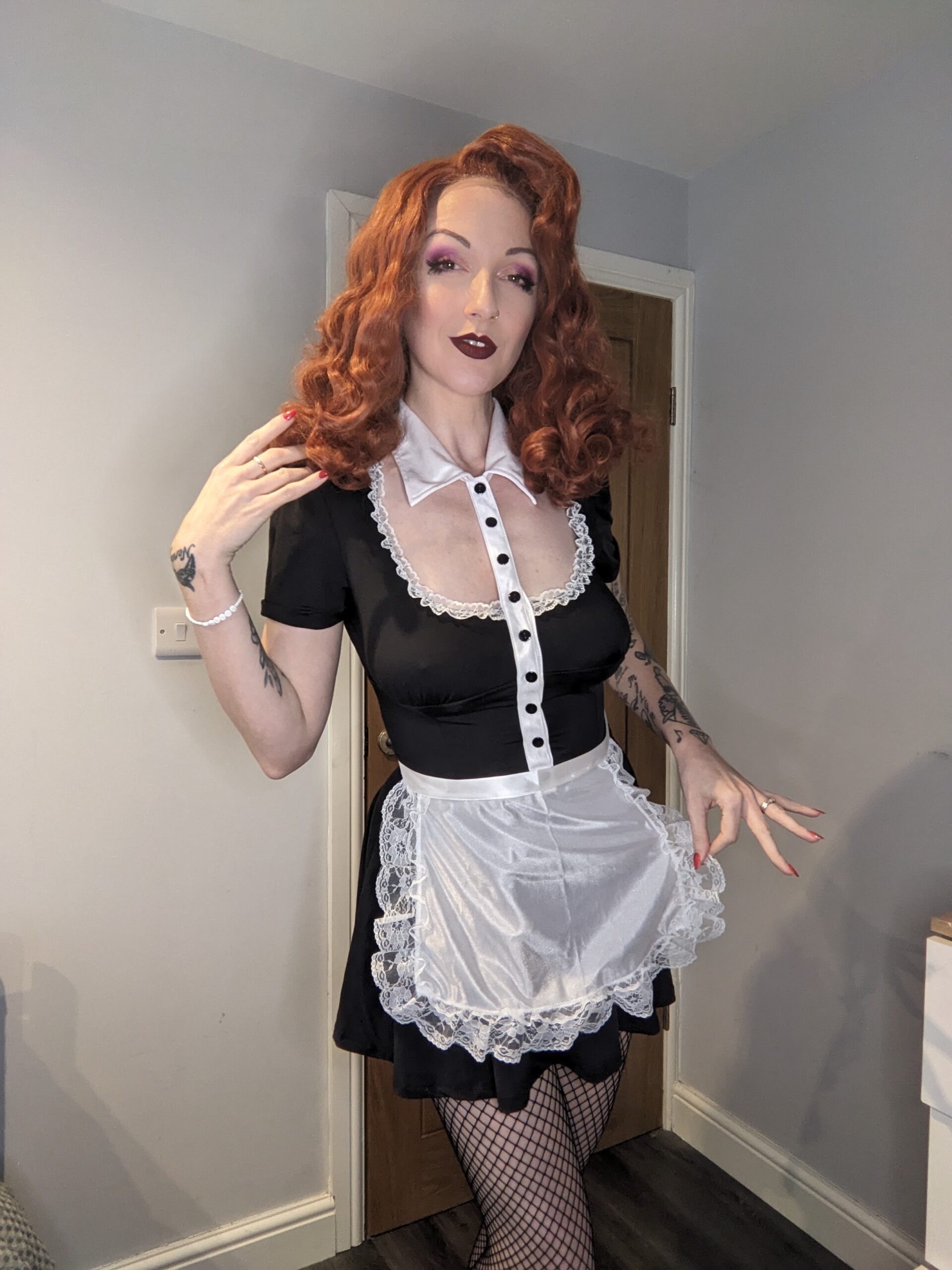Defining Demigirl and Demiboy
Demigirl and demiboy are terms used by individuals who identify partially as a particular gender. Demigirls feel a sense of connection to femininity, but not fully female, while demiboys feel a partial connection to masculinity but not fully male. These identities represent the complex and diverse ways people experience and express their gender, challenging traditional binary notions of male and female.
Understanding the Basics
Demigirl and demiboy are terms used by individuals who identify partially as a particular gender. Demigirls feel a sense of connection to femininity, but not fully female, while demiboys feel a partial connection to masculinity but not fully male. These identities represent the complex and diverse ways people experience and express their gender, challenging traditional binary notions of male and female.
Understanding these identities requires moving beyond the strict limitations of the male-female binary. Demigirls might identify with some aspects of femininity, such as clothing styles or interests, but not all. They may also experience a disconnect from societal expectations associated with being fully female. Similarly, demiboys might relate to certain masculine traits or expressions but not feel entirely aligned with the traditional definition of manhood.
It’s important to remember that demigirl and demiboy are self-identified labels, and individuals may express their identities in different ways. Some demigirls may use she/her pronouns alongside other pronouns, while some demiboys might identify with he/him pronouns along with others. The fluidity and personal expression inherent in these identities highlight the spectrum of human experiences beyond rigid gender categories.
Key Characteristics of Demigirl Identity
Demigirl describes a person who partially identifies as female. While they may feel connected to femininity, they don’t fully identify as a woman. This could mean identifying with some aspects of femininity, such as certain clothing styles or interests, but not others. It can also mean feeling disconnected from societal expectations associated with being a woman.
A key characteristic of the demigirl identity is that it exists on a spectrum. Some demigirls may feel a stronger connection to femininity than others, and their experience can evolve over time. It’s important to remember that each person’s understanding and expression of bdsm gear their gender identity is unique.
Key Characteristics of Demiboy Identity
Demigirl describes a person who partially identifies as female. While they may feel connected to femininity, they don’t fully identify as a woman. This could mean identifying with some aspects of femininity, such as certain clothing styles or interests, but not others. It can also mean feeling disconnected from societal expectations associated with being a woman.
A key characteristic of the demigirl identity is that it exists on a spectrum. Some demigirls may feel a stronger connection to femininity than others, and their experience can evolve over time. It’s important to remember that each person’s understanding and expression of their gender identity is unique.
Demiboy describes a person who partially identifies as male. While they may feel connected to masculinity, they don’t fully identify as a man. This could mean identifying with certain masculine traits or expressions but not feeling entirely aligned with the traditional definition of manhood.
Like demigirl, demiboy exists on a spectrum. Some demiboys may feel a stronger connection to masculinity than others, and their experience can change over time. It’s important to remember that each person’s understanding and expression of their gender identity is unique.
Experiences of Demigirl and Demiboy Individuals
Demigirl and demiboy are identities that challenge the traditional binary understanding of gender. These terms describe individuals who partially identify with a specific gender, feeling a connection to its associated traits and expressions but not fully aligning with it.
Social Perception and Challenges
Understanding demigirl and demiboy identities requires moving beyond the rigid confines of male and female categories. Demigirls connect with femininity to varying degrees, embracing some aspects while rejecting others. Similarly, demiboys identify partially with masculinity, experiencing a disconnect from traditional notions of manhood.
- Demigirls may resonate with feminine clothing styles or interests but not feel compelled by societal expectations tied to womanhood.
- Demiboys might express themselves through masculine traits or activities without feeling fully aligned with the traditional definition of masculinity.
Experiences for demigirl and demiboy individuals can be diverse, shaped by personal expression and societal perceptions. While these identities challenge binary norms, they also face unique challenges in a world often geared towards male and female categories.
Navigating social spaces can be complex. Misgendering, lack of understanding, and prejudiced attitudes can create feelings of isolation and invalidity. Finding supportive communities and allies is crucial for demigirl and demiboy individuals to thrive.
Coming Out and Finding Community

Demigirl and demiboy are terms used by individuals who identify partially as a particular gender. Demigirls feel a sense of connection to femininity, but not fully female, while demiboys feel a partial connection to masculinity but not fully male. These identities represent the complex and diverse ways people experience and express their gender, challenging traditional binary notions of male and female.
Understanding these identities requires moving beyond the strict limitations of the male-female binary. Demigirls might identify with some aspects of femininity, such as clothing styles or interests, but not all. They may also experience a disconnect from societal expectations associated with being fully female. Similarly, demiboys might relate to certain masculine traits or expressions but not feel entirely aligned with the traditional definition of manhood.
It’s important to remember that demigirl and demiboy are self-identified labels, and individuals may express their identities in different ways. Some demigirls may use she/her pronouns alongside other pronouns, while some demiboys might identify with he/him pronouns along with others. The fluidity and personal expression inherent in these identities highlight the spectrum of human experiences beyond rigid gender categories.
Demigirl describes a person who partially identifies as female. While they may feel connected to femininity, they don’t fully identify as a woman. This could mean identifying with some aspects of femininity, such as certain clothing styles or interests, but not others. It can also mean feeling disconnected from societal expectations associated with being a woman.
A key characteristic of the demigirl identity is that it exists on a spectrum. Some demigirls may feel a stronger connection to femininity than others, and their experience can evolve over time. It’s important to remember that each person’s understanding and expression of their gender identity is unique.
Demiboy describes a person who partially identifies as male. While they may feel connected to masculinity, they don’t fully identify as a man. This could mean identifying with certain masculine traits or expressions but not feeling entirely aligned with the traditional definition of manhood.
Like demigirl, demiboy exists on a spectrum. Some demiboys may feel a stronger connection to masculinity than others, and their experience can change over time. It’s important to remember that each person’s understanding and expression of their gender identity is unique.
- Demigirls may resonate with feminine clothing styles or interests but not feel compelled by societal expectations tied to womanhood.
- Demiboys might express themselves through masculine traits or activities without feeling fully aligned with the traditional definition of masculinity.
Experiences for demigirl and demiboy individuals can be diverse, shaped by personal expression and societal perceptions. While these identities challenge binary norms, they also face unique challenges in a world often geared towards male and female categories.
Navigating social spaces can be complex. Misgendering, lack of understanding, and prejudiced attitudes can create feelings of isolation and invalidity. Finding supportive communities and allies is crucial for demigirl and demiboy individuals to thrive.
Relationships and Dating Experiences
Demigirl and demiboy are identities that challenge the traditional binary understanding of gender. These terms describe individuals who partially identify with a specific gender, feeling a connection to its associated traits and expressions but not fully aligning with it.
Understanding demigirl and demiboy identities requires moving beyond the rigid confines of male and female categories. Demigirls connect with femininity to varying degrees, embracing some aspects while rejecting others. Similarly, demiboys identify partially with masculinity, experiencing a disconnect from traditional notions of manhood.
- Demigirls may resonate with feminine clothing styles or interests but not feel compelled by societal expectations tied to womanhood.
- Demiboys might express themselves through masculine traits or activities without feeling fully aligned with the traditional definition of masculinity.
Experiences for demigirl and demiboy individuals can be diverse, shaped by personal expression and societal perceptions. While these identities challenge binary norms, they also face unique challenges in a world often geared towards male and female categories.
Navigating social spaces can be complex. Misgendering, lack of understanding, and prejudiced attitudes can create feelings of isolation and invalidity. Finding supportive communities and allies is crucial for demigirl and demiboy individuals to thrive.
Representation in Media and Culture
Representation matters in media and culture. It shapes how we see ourselves and others, influencing our understanding of the world and its diverse inhabitants. For individuals who identify as demigirl or demiboy, accurate and inclusive representation is crucial for fostering a sense of belonging and validation.
Limited Depictions and Stereotypes
Representation matters in media and culture. It shapes how we see ourselves and others, influencing our understanding of the world and its diverse inhabitants. For individuals who identify as demigirl or demiboy, accurate and inclusive representation is crucial for fostering a sense of belonging and validation.
However, limited depictions of these identities in mainstream media perpetuate harmful stereotypes and contribute to feelings of invisibility and isolation. When demigirls and demiboys are portrayed inaccurately or not at all, it reinforces the idea that their experiences are not valid or worthy of attention.
This lack of representation can have damaging consequences. It can lead to internalized homophobia or transphobia, as individuals may struggle to reconcile their identities with the limited and often negative portrayals they encounter. It can also contribute to feelings of shame and isolation, making it harder for demigirls and demiboys to connect with others who understand their experiences.
Furthermore, the absence of positive role models can make it challenging for young people exploring their gender identity to envision a future where they are accepted and celebrated.
Efforts Towards Increased Visibility
Representation matters in media and culture. It shapes how we see ourselves and others, influencing our understanding of the world and its diverse inhabitants. For individuals who identify as demigirl or demiboy, accurate and inclusive representation is crucial for fostering a sense of belonging and validation.
However, limited depictions of these identities in mainstream media perpetuate harmful stereotypes and contribute to feelings of invisibility and isolation. When demigirls and demiboys are portrayed inaccurately or not at all, it reinforces the idea that their experiences are not valid or worthy of attention.
This lack of representation can have damaging consequences. It can lead to internalized homophobia or transphobia, as individuals may struggle to reconcile their identities with the limited and often negative portrayals they encounter. It can also contribute to feelings of shame and isolation, making it harder for demigirls and demiboys to connect with others who understand their experiences.
Furthermore, the absence of positive role models can make it challenging for young people exploring their gender identity to envision a future where they are accepted and celebrated.
Efforts towards increased visibility are crucial for creating a more inclusive media landscape. This includes:
- Portraying demigirl and demiboy characters in diverse and authentic ways, showcasing their experiences, relationships, and challenges without relying on stereotypes.
- Creating opportunities for writers, directors, and actors from marginalized communities to tell their own stories.
- Promoting media literacy initiatives that educate audiences about gender identity and challenge misconceptions.
- Supporting organizations and platforms that advocate for LGBTQ+ representation in media.
By working together, we can strive for a world where demigirl and demiboy individuals see themselves reflected accurately and positively in the media they consume. This will not only foster greater understanding and acceptance but also empower these communities to live authentically and confidently.
Positive Representations and Role Models
Representation in media and culture is crucial, as it shapes our perceptions of ourselves and others. For demigirl and demiboy individuals, accurate and inclusive representation is essential for fostering a sense of belonging and validation.
Unfortunately, limited portrayals of these identities often perpetuate harmful stereotypes and contribute to feelings of invisibility and isolation. When demigirls and demiboys are not depicted authentically, it reinforces the idea that their experiences are not valid or worthy of attention. This lack of representation can have damaging consequences, leading to internalized homophobia or transphobia, shame, and difficulty connecting with others who understand their experiences.
Positive role models are crucial for young people exploring their gender identity. Seeing themselves reflected in media can empower them to envision a future where they are accepted and celebrated.
Creating a more inclusive media landscape requires concerted effort. This includes:
* **Authentic Portrayals:** Depicting demigirl and demiboy characters in diverse and nuanced ways, showcasing their experiences, relationships, and challenges without relying on stereotypes.

* **Amplifying Marginalized Voices:** Providing opportunities for writers, directors, and actors from marginalized communities to tell their own stories.
* **Media Literacy:** Educating audiences about gender identity and challenging misconceptions through media literacy initiatives.
* **Supporting Advocacy:** Backing organizations and platforms that advocate for LGBTQ+ representation in media.
By working together, we can strive for a world where demigirl and demiboy individuals see themselves reflected accurately and positively in the media they consume. This will not only foster greater understanding and acceptance but also empower these communities to live authentically and confidently.
Supporting Demigirl and Demiboy Individuals

Understanding demigirl and demiboy identities requires moving beyond rigid gender categories. Demigirls connect with femininity to varying degrees, embracing some aspects while rejecting others. Similarly, demiboys identify partially with masculinity, experiencing a disconnect from traditional notions of manhood.
Experiences for demigirl and demiboy individuals can be diverse, shaped by personal expression and societal perceptions. While these identities challenge binary norms, they also face unique challenges in a world often geared towards male and female categories.
Navigating social spaces can be complex. Misgendering, lack of understanding, and prejudiced attitudes can create feelings of isolation and invalidity. Finding supportive communities and allies is crucial for demigirl and demiboy individuals to thrive.
Education and Awareness
Creating Inclusive Environments
Respecting Pronouns and Identities
Demigirls and demiboys are challenging traditional gender norms by embracing identities that exist beyond the strict confines of male or female. Understanding their experiences requires moving past rigid binary categories and acknowledging the spectrum of human gender expression.
Here’s a breakdown of these identities:
* **Demigirl:** A person who partially identifies as female. They may resonate with some aspects of femininity, like clothing styles or interests, but not fully align with societal expectations associated with womanhood.
* Remember, demigirls exist on a spectrum—some feel a stronger connection to femininity than others, and their experience can evolve over time.
* **Demiboy:** A person who partially identifies as male. They may express themselves through masculine traits or activities but not feel entirely aligned with traditional definitions of manhood.
* Like demigirls, demiboys exist on a spectrum, and their connection to masculinity can vary.
Supporting Demigirl and Demiboy Individuals:
Respecting pronouns is fundamental. Use the pronouns they identify with, whether it’s she/her, he/him, they/them, or a combination. When unsure, politely ask what pronouns someone prefers.
* **Educate Yourself:** Learn about these identities and challenge your own assumptions about gender.
* **Be an Ally:** Stand up against prejudice and discrimination when you encounter it.
* **Create Inclusive Spaces:** Use gender-neutral language whenever possible and make spaces welcoming to individuals of all genders.
Remember, everyone’s journey with their gender identity is unique. By fostering understanding, respect, and inclusivity, we can create a world where demigirls and demiboys feel seen, heard, and valued for who they truly are.
- Why The Vessel Craftsman Series Vape Has A Cult Following - June 3, 2025
- Why The Vessel Craftsman Series Vape Has A Cult Following - June 3, 2025
- Lip Fillers Vs Botox: Which Is Right For You? - June 2, 2025
